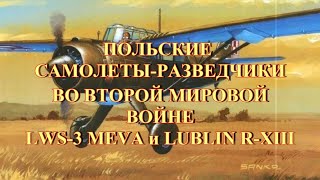
Polish reconnaissance aircraft 1945-2020 part 5

Fighter-bomber Su-22 tail number "3306" is taxiing to the launch pad for a reconnaissance flight from the airport in Svidvin. With the elimination of the 7th CLT, the only unit equipped with this type, the 40th CLT, took over the continuity of this type of task.
Currently, the Polish Air Force has three types of aircraft (Suchoj Su-22, Lockheed Martin F-16 Jastrząb and PZL Mielec M28 Bryza) that can perform reconnaissance flights. Their detailed purpose varies, but the individual intelligence data obtained through their task systems directly affects the completeness of the data interpretation and verification system. These aircraft also differ from each other in the means and method of obtaining data, as well as their processing and transmission to command. The fourth type entered the aviation equipment of the Border Troops in 2020 (stemme ASP S15 motor glider) and this fact is also noted in the article.
The Su-22 fighter-bombers were adopted by the Polish military aviation in the 110s in the amount of 90 copies, including: 22 single-seat combat Su-4M20 and 22 two-seat combat training Su-3UM6K. They were first commissioned in the 1984th Fighter-Bomber Regiment at Pyla (40) and the 1985th Fighter-Bomber Regiment at Swidwin (7th), and then in the 1986th Bomber-Reconnaissance Regiment at Powidz ( 8) and the 1988th Fighter Regiment. - Bomber regiment in Miroslavets (2 years). The units stationed at the airfields in Pyla and Povidze were part of the 3rd Fighter-Bomber Aviation Division with headquarters in Pyla. In turn, those stationed at the airfields in Svidvin and Miroslavets were part of the XNUMXth Fighter-Bomber Aviation Division with headquarters in Svidvin.

The change in the military-political system in Europe after the collapse of the USSR led, in particular, to a change in recognition areas from the so-called from the west to the eastern wall. As it turned out, they were not only a novelty, but also a surprise.
The first group of Polish flight and engineering personnel was sent for training on the Su-22 to Krasnodar in the USSR in April 1984. The first 13 Su-22 fighter-bombers were delivered to Poland in August-October 1984 to the airfield in Powidzu aboard Soviet transport aircraft in a disassembled state. Here they were assembled, checked and tested, and then accepted into the status of the Polish military aviation. These were seven Su-22M4 combat aircraft with tail numbers "3005", "3212", "3213", "3908", "3909", "3910" and "3911" and six Su-22UM3K combat training aircraft with tail numbers "104", "305", "306", "307", "308", "509". In October 1984 they were transferred from Powidz to Pila Airport. Further training on the Su-22 was carried out only in the country at the Central Air Force Technical Specialist Training Center (TsPTUV) in Olesnitsa, where two aircraft were delegated (Su-22UM3K "305" and Su-22M4 "3005"). as ground training facilities (temporarily) and aviation units equipped with new technology (then called super technology).
Over time, another Su-22 was introduced to the staff of the Air Force units. In 1985, it was 41 combat and 7 combat training aircraft, in 1986 - 32 combat and 7 combat training aircraft, and in 1988 - the last 10 combat aircraft. They were produced at a plant in Komsomolsk-on-Amur (in the Far East of the USSR). Su-22M4 were produced from eight production series: 23 - 14 pieces, 24 - 6 pieces, 27 - 12 pieces, 28 - 20 pieces, 29 - 16 pieces, 30 - 12 pieces, 37 - 9 pieces and 38 - 1 piece. They differed in small details of equipment. So, on the gliders of the 23rd and 24th series, there were no launchers installed on the fuselage of the ASO-2V thermal disintegrator cartridges (their purchase and installation was planned, but in the end this did not happen). On the other hand, on aircraft of the 30th series and above, an IT-23M TV indicator was installed in the cockpit, which made it possible to use X-29T air-to-ground guided missiles. In turn, the Su-22UM3K introduced into service with the Polish aviation came from four production series: 66 - 6 units, 67 - 1 unit, 68 - 8 units and 69 - 5 units.
Initially, the use of Polish Su-22s for reconnaissance flights was not intended. In this role, Su-20 fighter-bombers with reconnaissance containers KKR (KKR-1), brought to Poland in the 22s, were used. For comparison, both our southern and western neighbors (Czechoslovakia and the GDR), introducing the Su-1 into their military aviation equipment, purchased with them reconnaissance containers KKR-20TE, which they used throughout the entire life of this type of aircraft. In Poland, there was no such need until the Su-1997 was withdrawn from service in February XNUMX.
The Air Force and Air Defense Command then decided to continue using the KKR reconnaissance containers in the Polish military aviation and adapt Su-22 fighter-bombers to wear them (it included samples from later deliveries). Under the supervision of Wojskowe Zakłady Lotnicze Nr 2 SA from Bydgoszcz, the installation was carried out, the control panel (it was installed on the left side of the cockpit, on the sloping part of the dashboard right in front of the engine control lever) and the KKR bunker itself on the Su-22M4 with tail number “ 8205". Additionally, under the fuselage, directly in front of the beam on which the KKR was suspended, an aerodynamic fairing was made, covering bundles of control and electrical cables going from the fuselage to the container. Initially, the cable exit (connector) was located much closer to the front of the fuselage and after hanging the container, the beam came out in front of the beam and an aerodynamic casing had to be added to hide the wiring.
